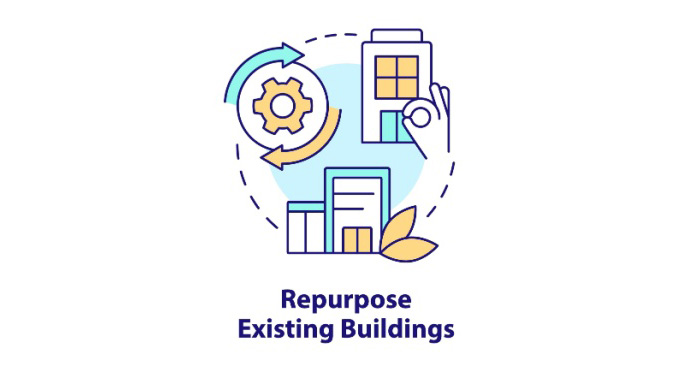The Multifamily Economic and Market Commentary for April from Fannie Mae focused on the conversion of commercial property to residential uses. It looked at different approaches and discussed the factors that may dictate the role conversions play in providing new housing over the next few years.
Setting the background
The increase in the number of people working from home since the pandemic has led to many cities having significant volumes of underutilized office space and, to a lesser extent, underutilized hotel and retail space. The shortage of available housing in many markets has focused attention on converting this commercial space to housing. In its monthly commentary, Fannie Mae gathered information on prior studies of these conversions to highlight factors that lead to successful outcomes.
Fannie Mae looked both at conversions through adaptive reuse, where the existing building is modified to support housing, and through redevelopment, where the existing building is torn down to make way for new housing construction.
A key to success is the housing developer acquiring the commercial property to be converted at a low price. Another key is that there is sufficient demand for multifamily housing in the target market to absorb the multifamily housing currently under development along with the proposed project.
Looking at the challenges
The commentary notes that adaptive reuse conversions of hotels to single-room occupancy (SRO) housing have been done economically. However, it also notes that hotels are expected to perform well in 2024 and therefore may not be a good source of convertible properties.
Retail space utilization is in flux because of competition from e-commerce. However, operating models where local retail space is used in a complementary fashion with e-commerce are evolving, so retail may not be a major source of convertible properties going forward.
Surplus office space may be available, but may it require major renovations to adapt it for housing. The report notes that the requirements for gas, water, power and sewer are much higher for residential space than for office space, so the buildings may require costly upgrades. It also notes that code requirements for natural lighting and ventilation of residential spaces limits the plat size of a building which is a good candidate for conversion. Many newer office buildings have larger than optimal plat sizes so they are not good candidates.
Fannie Mae suggests that waivers of code requirements may be required to make conversions of existing buildings viable. Examples of waivers cited were allowing residential lofts or SRO’s to be built, or not requiring full upgrades of buildings to current earthquake standards.
Second order effects
The commentary notes that the changing nature of the neighborhoods where disused office buildings are candidates for conversion itself presents a challenge. The bars and restaurants which were supported by the workers who are no longer coming to work in the buildings may fail, making the neighborhood less attractive to potential residents. At the same time, businesses desired by the new potential residents, like grocery stores and childcare, may not exist until a critical mass of residents exists. These neighborhood changes present risk for the developer or investor considering a residential conversion.
The commentary states that commercial conversions are expected to provide about 4 percent of new housing over the next few years. It points to a study indicating that large scale conversion of commercial property to residential uses will not occur unless there are large declines in the prices for commercial buildings, which hasn’t happened yet. It also suggests that the majority of repurposing of commercial real estate will take place through redevelopment rather than through adaptive reuse in the years ahead.
The full commentary can be found here.












